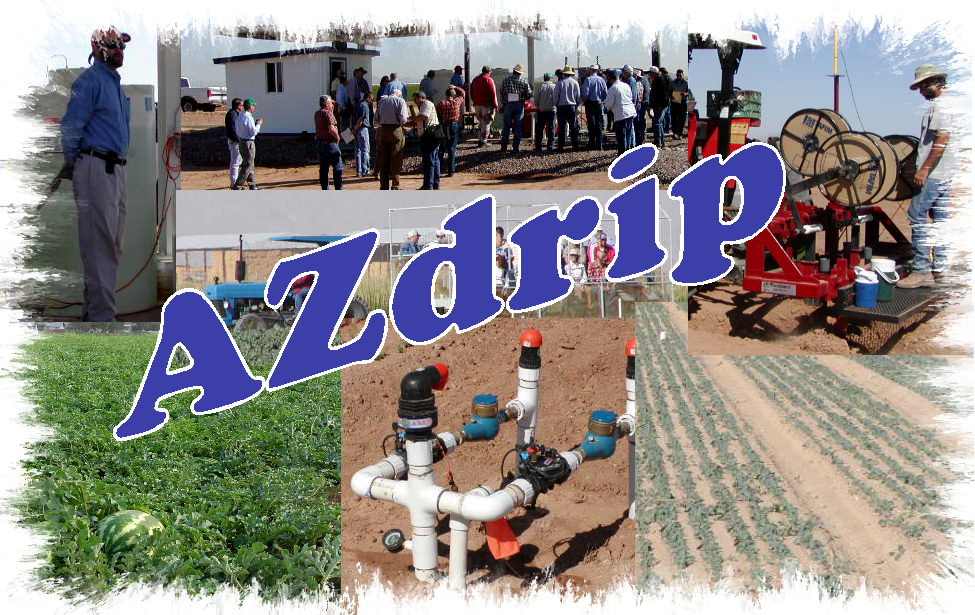
Subsurface
Drip Irrigation
Demonstration and Research Project
and Environmental Science
 |
The
University of Arizona |
| Subsurface
Drip Irrigation |
|
|
Department
of Soil, Water, and Environmental Science |
Irrigation Design
Two of our four subsurface drip irrigation (SDI) plots, one high frquency and one low frequency irrigation treatment, are established as permanent 80" (2.0 m) beds. Each permanent bed contains three drip tubes, spaced 19" (48 cm) apart.
The remaining two SDI plots, one high frquency and one low frequency irrigation treatment, are established as variable tube spacing plots and are dependent on the cropping system employed. Each plot may be configured as 40" (1.0 m) beds, each containing one drip tube or as 80" (2.0 m) beds each bed containing two drip tubes, spaced 40" (1 m) apart.
The drip tubing, Netafim® Typhoon (13 mil), was injected at a depth of 9" (23cm) below the bed surface. The drip tubing has a 12" (30 cm) emitter spacing and a flow rate of 0.18-0.25 gal/emitter/hr (0.68-0.95 L/emitter/hr).
The pump/filter station (figure 1 & 2 ) is comprised of a 70 gpm (265 Lpm) centrifugal pump, two 24" (0.6 m) Netafim sand filters, a Netfim disk filter, and two LMI Milton Roy Electromagnetic Dosing pumps for chemigation.
Water is delivered to the plots from a pump/filter station via a 3" (7.6 cm) diameter submain to a 2" (5cm) diameter pvc inlet manifold at the south end of each plot. Each plot manifold is equipped with an electric solenoid valve, water meter, and air relief valve (figure 3 ). At the north end of each plot the drip tubing is attached to another manifold to allow for water pressure equalization. Each manifold is also designed with a valved riser to the soil surface for quick and easy backflushing of manifolds and drip tubing.
The drip tubing is attached to the inlet and outlet manifolds using 5/8"(1.6 cm) black poly tubing and compression type fittings.
|
|
Search
AZdrip and ACIS
|
For comments and questions regarding the AZdrip site contact: webmanager